No matter how big or small your company is, it probably holds a wide array of internal documentation.
And gathering these resources in one centralized repository should be one of your priorities if you want to provide your employees with the information they can lean on in their work.
Although building your knowledge base may seem like generating tedious and mundane paperwork that, in the end, nobody will read, it can actually prove to be crucial for keeping your business on track.
That's why in this article, we’ve outlined four reasons that will show you just how important it's to have your internal documentation in place. So let's start!
Keeping Records in One Place
Your internal knowledge is one of your most important assets, no matter what your company does or what industry your business is in.
This knowledge may include legal guidelines, such as policies and regulations, and protect your business from litigation. Or it can entail complex descriptions of the processes, protocols, strategies, and operations that are crucial for your company's success.
But what happens when a company doesn’t have a knowledge base that contains all the must-have information employees need in their daily work?
For starters, such companies lose money.
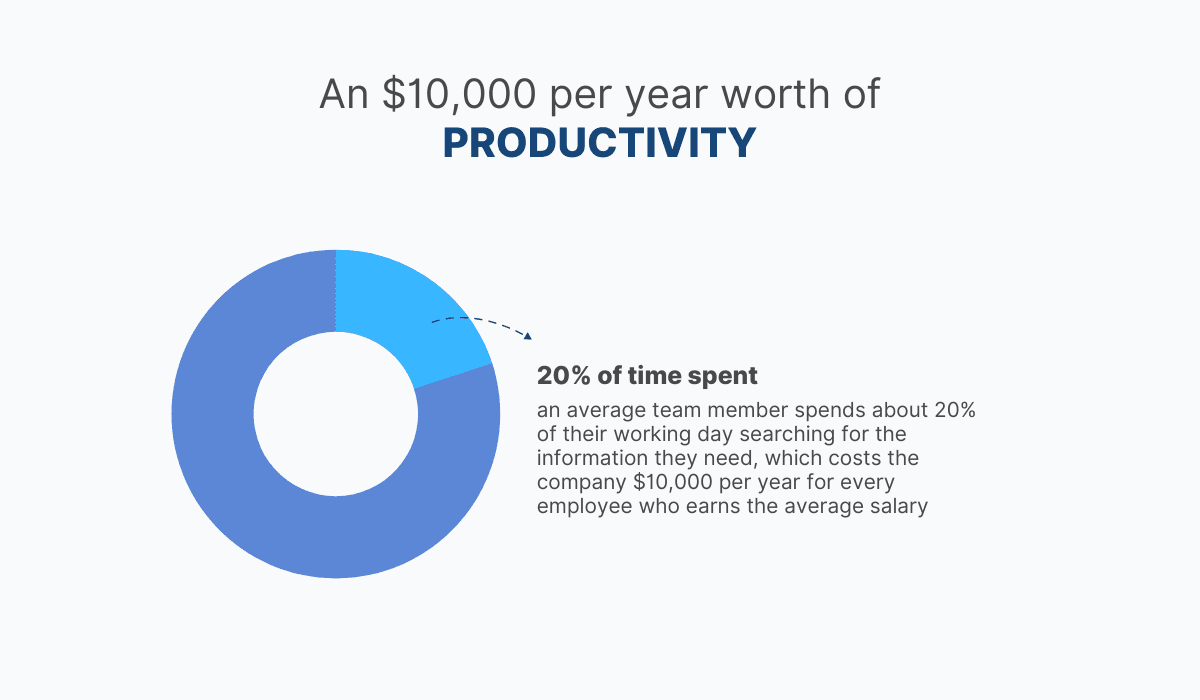
Source: Archbee
According to statistics, an average team member spends about 20% of their working day searching for the information they need. And the lost time comes at a steep price–it costs the company $10,000 per year for every employee who earns the average salary.
But that's not all. Productivity of the employees suffers as well. A Panopto study revealed that 81% of employees report being frustrated when they can't access the information they need.
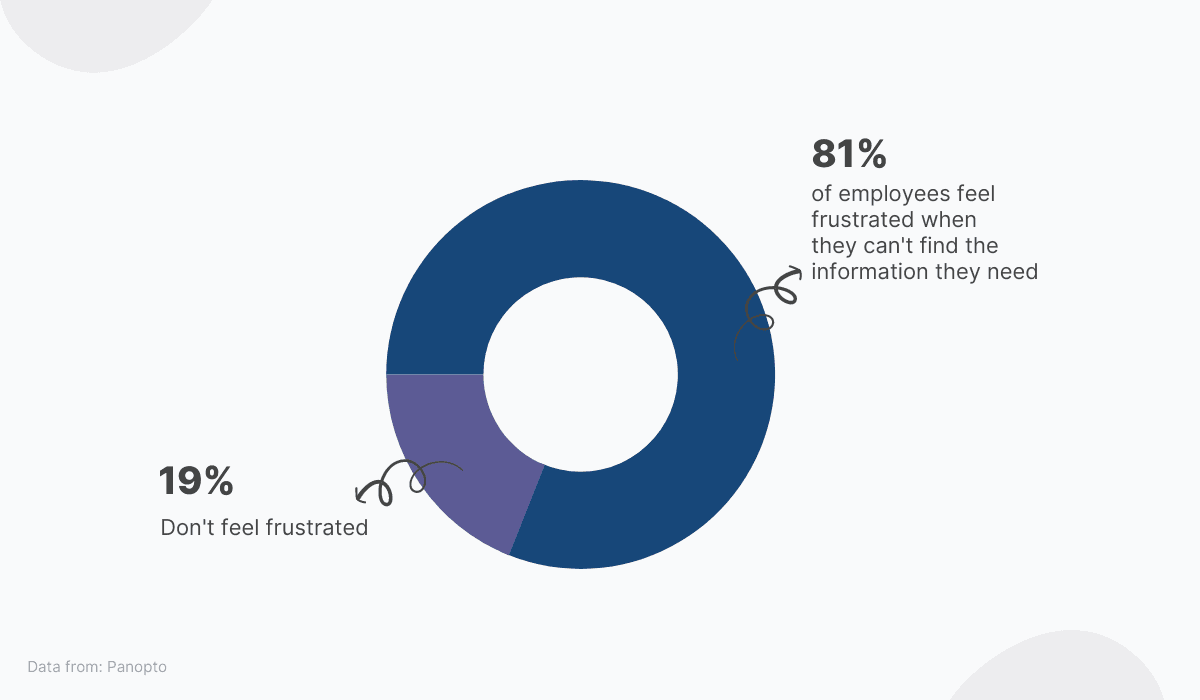
Source: Archbee
As you can see, the lack of information can have a huge impact on the employees’ productivity and satisfaction, so it's worth the time and effort to create a centralized knowledge base for your company.
Such a library brings together all the knowledge, wisdom, expertise, and information about the company and makes it available to everyone.
Tacit knowledge is precious and can easily be lost when employees leave or retire.
But if you write it down, it can become a competitive advantage. Your employees will benefit immensely from such knowledge as they will be able to skip steps they would otherwise have to manage on their own.
That means they will no longer have to search through endless three-ring binders, computer folders, or email correspondences. They won't have to go around the office asking other team members for help.
Since everything will be stored in one central library, all of the company's internal knowledge will be available to employees with just a few clicks of the mouse.
But let's not linger on theoretical explanations. Let's see what the benefits of having a knowledge base in place look like in practice.
Shopify, the Canadian e-commerce platform, had a hard time conveying information to the employees who worked in customer support.

Source: Tech Life Ireland
As e-commerce changes rapidly, Shopify's product teams constantly launch new products and features. So they used to have a problem with delivering the latest technical information to customer support employees who communicated directly with platform users.
Most of these employees worked remotely, so there was also an issue with how to notify them of the new changes and ensure all employees were aware of them.
Shopify solved this problem by choosing a knowledge base software solution that had the ability to integrate with Slack. Each time a new document was added to the knowledge library, employees would be notified via Slack.
Archbee also offers a Slack integration, so users can get notified of new events happening within the knowledge base.
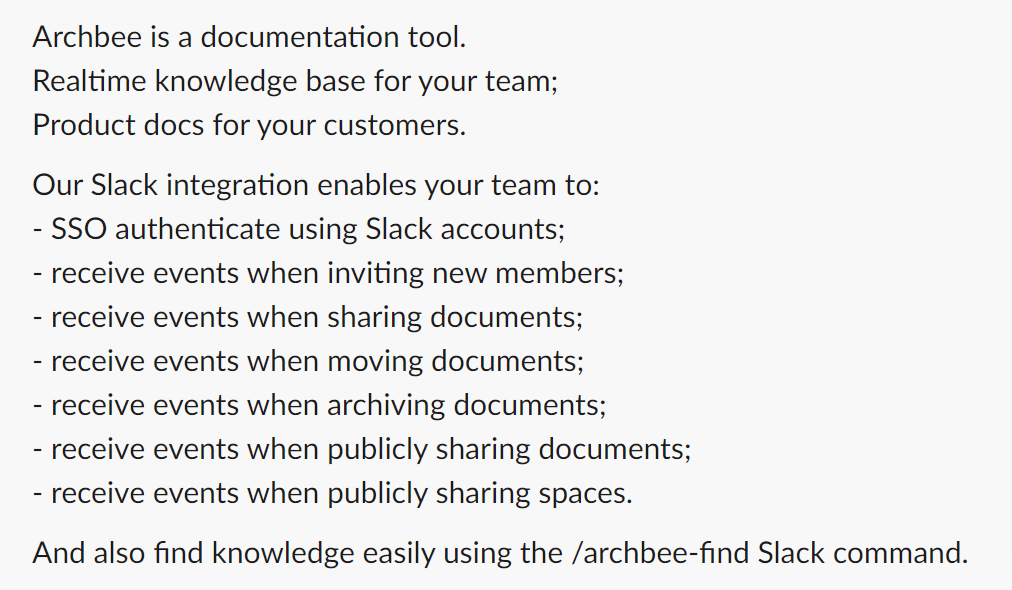
Source: Slack
And every time they needed a piece of information to answer a ticket from a user, other team members provided them with a link to the knowledge base that solved the issue.
That way, all staff members had all the up-to-date documents they needed to do their job. They no longer had to look around for information. Everything was at their fingertips in one centralized knowledge library.
If you still have any doubts if you should build a knowledge base library, we hope that Shopify's example has convinced you that knowledge bases help employees find information at lightning speed, as well as keep them notified of any and all changes to your work processes, policies, and procedures.
Streamlining Performance Tracking
Have you ever started working on a project, only to find out from a coworker that something similar had already been done in the past?
As there was no record of the past project, you couldn’t check what had worked and what hadn't. You couldn't track the campaign's progress, avoid past mistakes, or continue where the team left off. Their strategy may have been successful and yielded excellent results, but they were of no use to you.
If this scenario seems familiar, you’re already aware that not keeping performance tracking records can be a huge issue for your company.
Unfortunately, statistics show that only 4% of companies always document their processes. This makes it almost impossible to set goals, monitor progress, and enable employees to use tried and tested practices in their work.
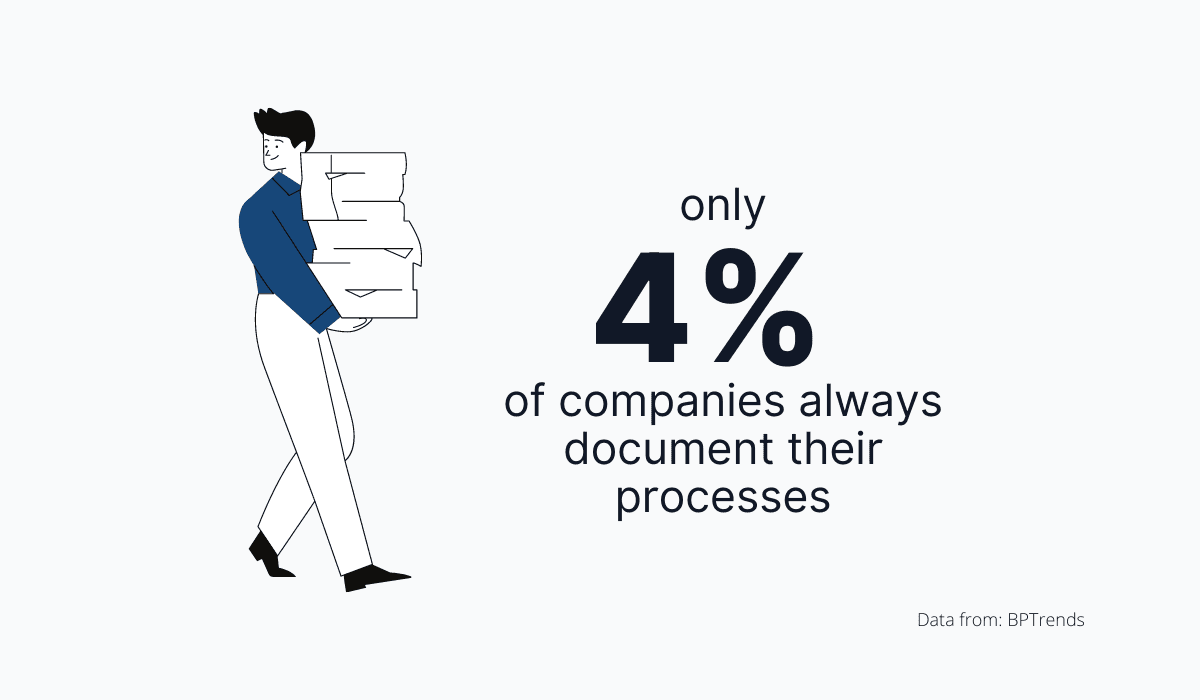
Source: Archbee
That’s exactly why it’s important to have a knowledge base in place. It can help you immensely to quickly document important aspects of your work, track their progress and store it in one place where everyone, even team members from different departments, can find and use them.
Take the task list as an example. If you document the tasks you've done and need to do, it will be easier for you to keep an eye on the goals you set initially and be sure you are headed in the right direction, without losing sight of the progress you’ve made.
In addition, if new team members join the project, they can easily use your documentation and continue your work using your task list, without spending hours tracking down the project details and insights.
An example from NASA Goddard Space Flight Center shows us how the process of tracking progress, documenting it, and sharing it with others is performed in one of the most innovative organizations in the world. As you can imagine, the projects they work on can take many years and cost billions of dollars.

Source: Popular Science
In their work, they use review sessions which they call "pause and learn." At crucial project stages, team members gather and discuss what went well and what went wrong.
They evaluate the project's performance up to that point, go over any potential mistakes to avoid them in the future, and highlight the processes that proved successful so they can repeat them.
Then, the key elements of the conversation are documented in Knowledge Maps, which are then shared with other employees.
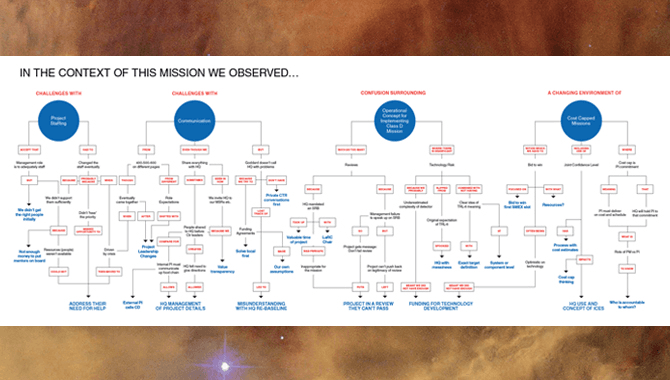
Source: Appel NASA
This example perfectly shows how you can significantly improve and streamline current and future projects by tracking and documenting performance.
Keep in mind that, although it may seem like a lot of work to document all the stages of the project, other employees can learn from it and apply the best practices in their work. And that can have a tremendous effect on your company and its progress.
Facilitating More Effective Training
A lot of companies do actually realize the powerful effects of having a knowledge base, but keep postponing creating one for a less hectic time in the future because the task just seems too daunting.
But it’s never a good idea to postpone this task for too long. A quality knowledge base can save you a massive amount of time during onboarding and even boost the retention rate. In other words, the time spent creating the knowledge base will definitely pay off when you start reaping the benefits of having a centralized library of knowledge.
Research by Brandon Hall Group found that companies with a strong onboarding program can improve new employee retention by 82% and productivity by over 70%.
On the other hand, businesses with weak onboarding processes undermine their own credibility in the eyes of their candidates, and are more likely to lose their new hires in the first year.
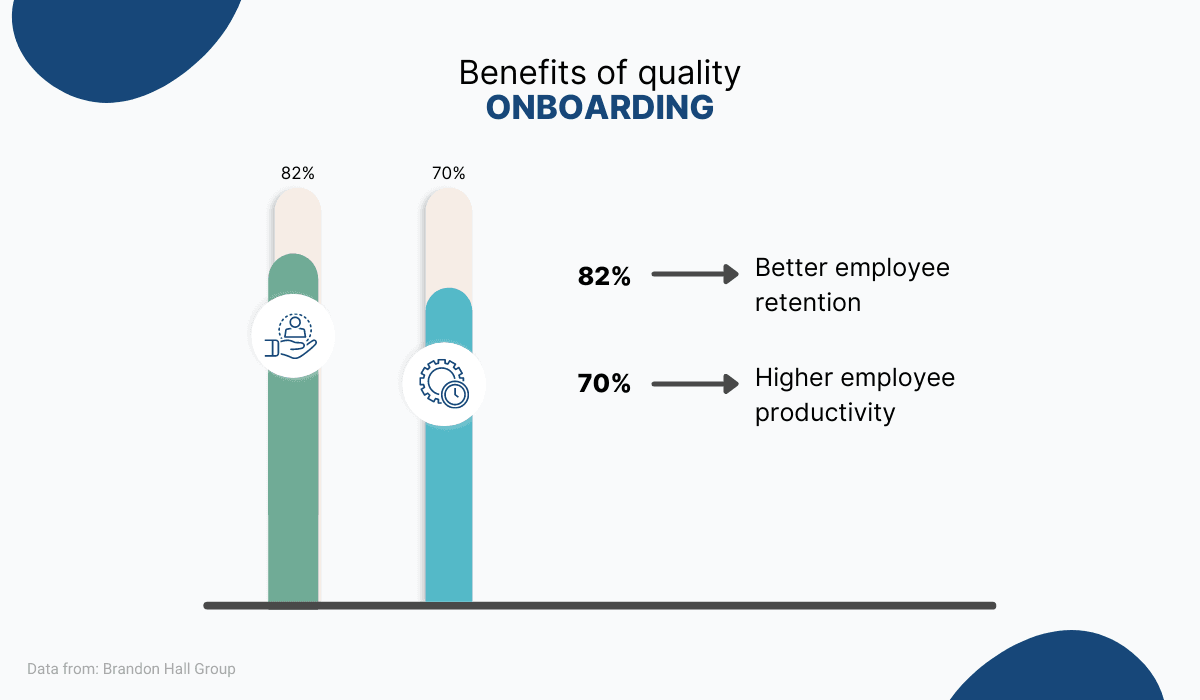
Source: Archbee
To prevent this from happening, do your best to create efficient onboarding materials, store them in your knowledge repository and use them for every new employee that you hire.
Not only will this save you a lot of work as you won't have to go over the basics with every new employee that comes to your company, your new hires will also get a more consistent onboarding experience.
They will have access to all the valuable guides, tutorials, directions, and other information they need to get up to speed in their new roles.
And there won’t be situations anymore where you didn’t pass the new hires the must-have information because you simply forgot. Or they won't have to wait for someone from the HR or team manager to find the time to show them the ropes.
With all the training materials in one knowledge library, they will have all the resources to start learning independently at their own pace, safe in the knowledge that they have all the necessary information at their disposal to quickly become an integral part of the team.
This should enable them to become confident in their new role much faster, meaning they are far less likely to leave their current position in search of better opportunities.
Some companies assume that specific processes are self-explanatory and do not consider it necessary to include them in the knowledge library.
But keep in mind that even simple tasks like check-in and out can be complicated for new hires. The more you document, the more effective your onboarding will be, and the more satisfied your new hires will be.
Let's look at how IMGE, a digital media agency, has benefited after documenting training materials and making them available to new employees.

Source: Glassdoor
As a digital agency, they hire many people, but they also employ freelancers that often come and go.
It became challenging to track all the people coming in and out of the company, not to mention time-consuming, so they decided to streamline the onboarding process by creating a training program and storing it in one centralized knowledge base.
After that, each new member of the team was able to go through onboarding materials on their own, and then ask the managers if they had any further questions and concerns.
The company has seen great results in the speed at which they were able to onboard new people, reducing the number of questions asked by new hires in the process.
The company’s director of marketing, Alex Boedigheimer, has been very happy with the new onboarding process:
We sat down and turned everything into a process that is repeatable so we can train faster. As we hire more people and scale-up, we can cut down on the time we’re using to teach people by giving them reference points.
By setting up an onboarding program and putting it in the knowledge library, they were able to train new employees more efficiently and have more time to focus on their clients.
As you can see, it’s clear that onboarding is one of the biggest reasons why you should record your internal documentation. Although building a knowledge base takes time, the benefit to be gained here is that you’ll be saving time with every new employee you’re training.
Empowering Employees With Knowledge
New employees are not the only ones who need information about processes, protocols, and operations.
Even team members who have been with the company for a long time sometimes need to be reminded of how things are done or look up information they have forgotten over time.
Our memory can often let us down, especially at work, where we're bombarded with large amounts of data every day. Even when we think we know something, occasionally we need to refresh our memory to make sure we're on the right track.
Also, processes are constantly revised, and new documents are regularly created. To be efficient, employees need to be aware of those changes so they can implement them in their work.
In all of this chaos, it’s no surprise that 54% of employees still spend more time looking for documents and files than replying to emails and messages.
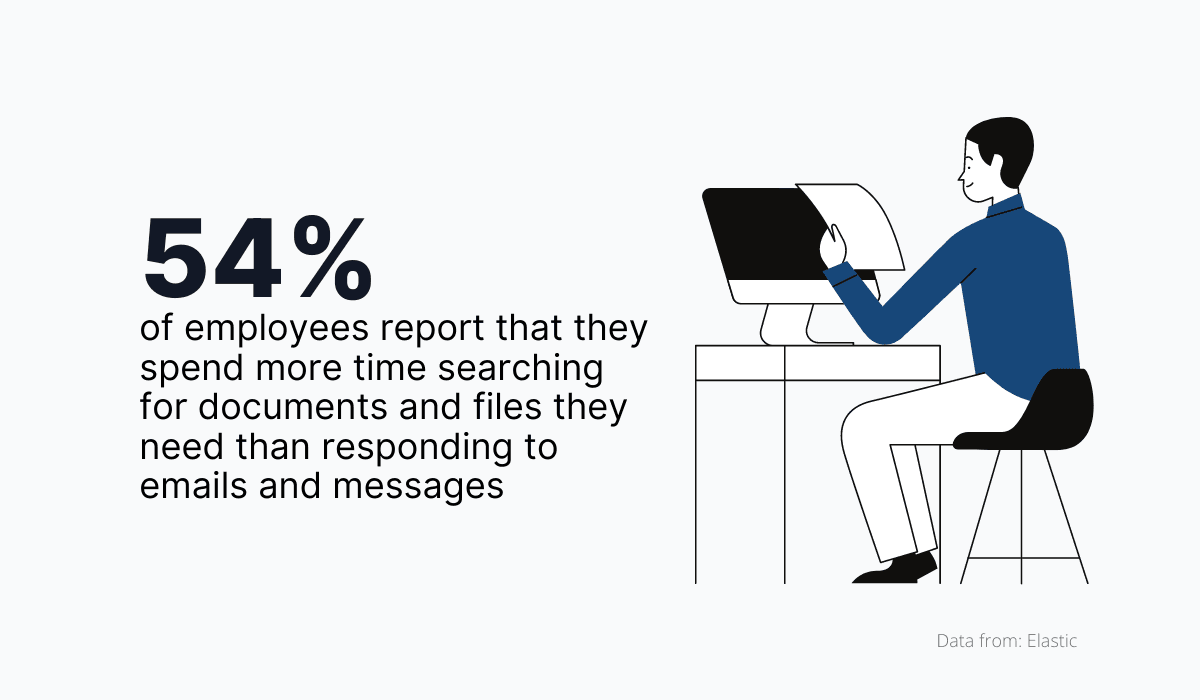
Source: Archbee
That basically means they are wasting too much of their valuable time searching for documentation instead of focusing on real work.
So if you want your employees to work better, faster, and more productively, you need to empower them with knowledge.
The best way to achieve this is to store your knowledge base on an online platform so that important information, projects, strategies, and guides are available to the team members at all times.
Our documentation software, Archbee, offers that kind of platform, allowing companies to create an internal wiki for all their documents.
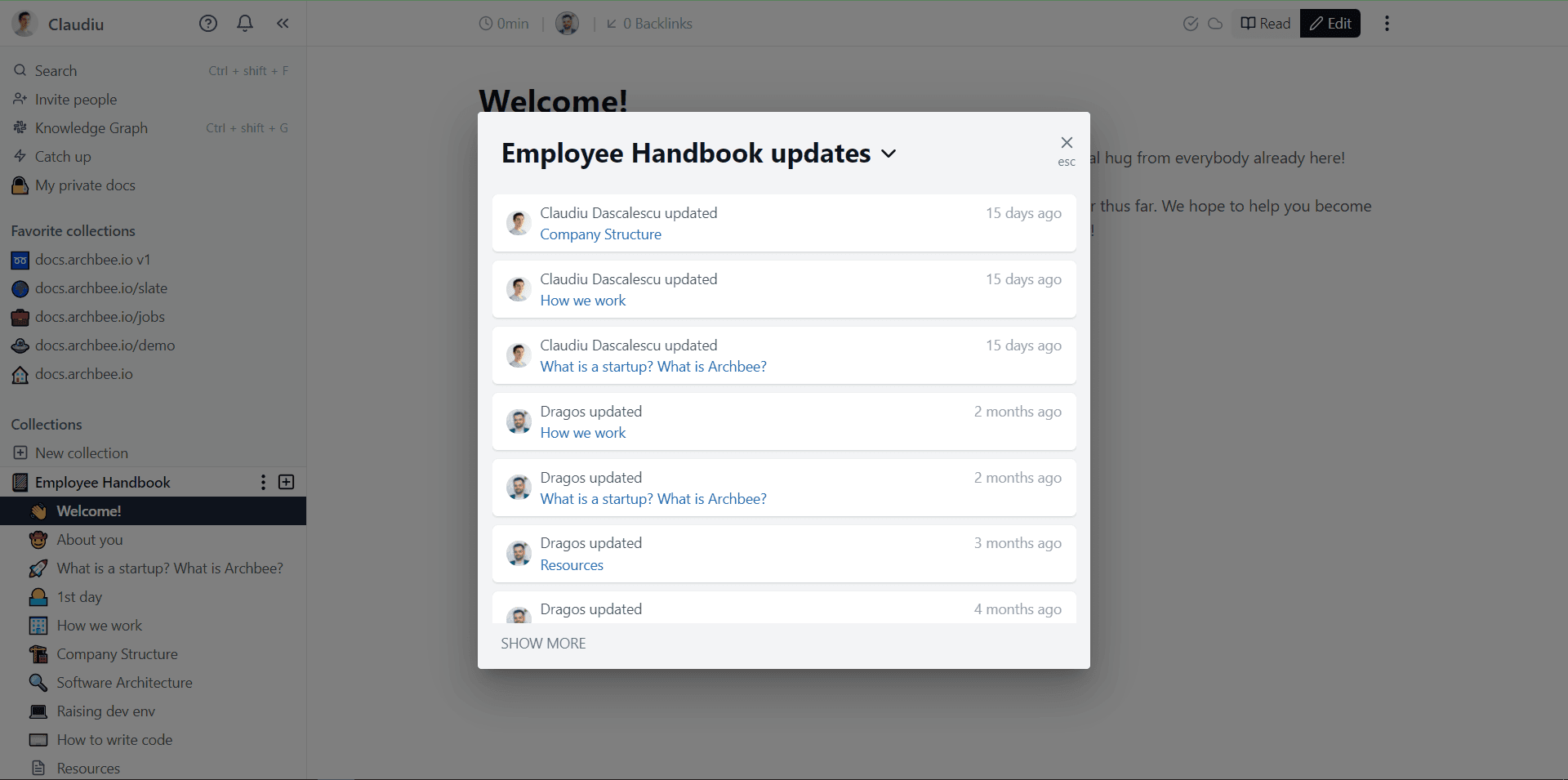
Source: Archbee
Because Archbee is cloud-based, employees can use it whenever and wherever they want, empowering them to improve their overall efficiency.
Because Archbee has excellent searchability features, employees will find the data they are looking for in no time and will no longer be part of the devastating statistic we’ve quoted earlier.
If you give your employees resources to be innovative in their work and contribute to the company’s progress, as we can see in the example of URX, a SaaS company recently acquired by Pinterest.
URX hosts its knowledge wiki on GitHub, and uses it in a way that allows the company to provide information not only for the current versions of their software, but also for previous iterations. That way, anyone interested can examine the evolution of every project and what updates were made to improve the product.
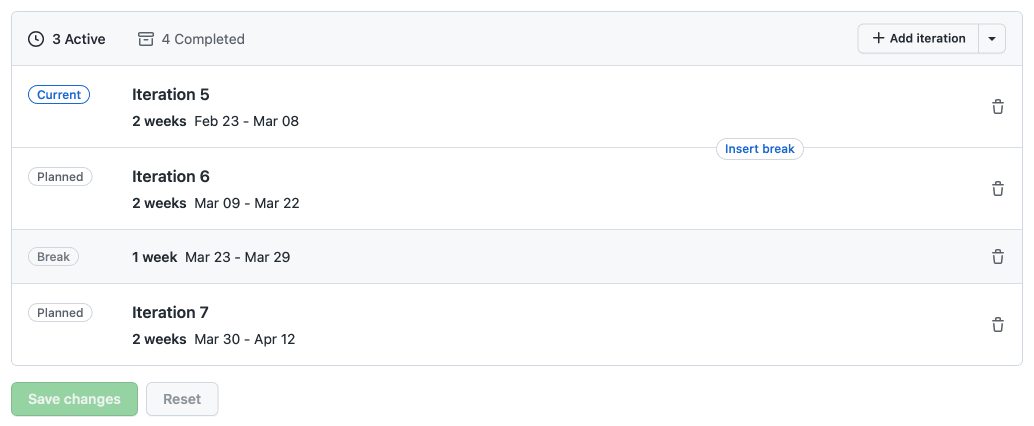
Source: GitHub
This method proved to be so effective and important for the company's progress and innovation that their CEO, John Milinovich, spends 10-20% of each day curating and updating their knowledge library for the team.
So much of our time is spent on how we articulate what it is, why it’s valuable, what it can do for people. Being able to write this down in a place where anyone can contribute ideas and we can see how things are changing over time will be critical.
You know what they say: knowledge is power. Increasing your employees’ knowledge enables them to develop their skills and ideas, thus guaranteeing your company’s future success.
Conclusion
In this article, we’ve tried to show you how creating internal documentation is not only about gathering all the information in one place.
It's also about sharing the tacit knowledge–skills, experience, and ideas that will arm your employees to tackle any problem that may arise in the workplace.
This knowledge can also support new hires during the onboarding process, help you track the progress of your projects, and motivate your staff to be innovative in their work.
Having all these reasons in mind, we hope we’ve inspired you to create such a knowledge base for your company, and regularly add new internal documents to ensure that your business runs smoothly at all times.
Frequently Asked Questions
A centralized repository for internal documentation is crucial for keeping a business on track. It provides employees with access to important information such as legal guidelines, descriptions of processes, protocols, strategies, and operations. Companies that lack such a knowledge base tend to lose money due to inefficiencies and employee frustration and have a negative impact on productivity and satisfaction.



